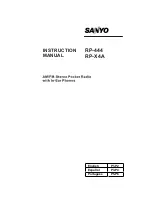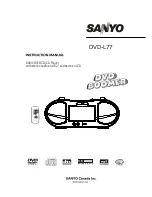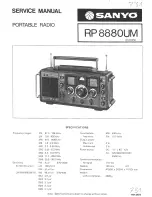
14
3
Function, scope of delivery and technical parameters
3.1
Function of the VARTA element backup
The VARTA element backup energy storage system is a storage system for operation in a 3-phase house
network with the option of connecting a separate grid-connected photovoltaic system. The latter must be a
generation system that feeds in not at full infeed, but after excess.
The VARTA element backup system serves to increase the percentage of self-consumption and the economic
efficiency of a photovoltaic system. If the photovoltaic system produces more electricity than is immediately
consumed, it can be stored intermediately in the energy storage system. The electricity is fed into the house
network again from the store as soon as the consumption is bigger again than the electricity quantity generated
by the photovoltaic system.
The VARTA element backup system is integrated into the house network triple-phase on the alternating current
side and works independently of the photovoltaic system.
A current sensor controls the charging and discharging processes of the energy storage system. If the current
sensor measures outgoing currents while there is available free charging capacity of the energy storage
system, the latter is charged. In the process, the batter converter in the VARTA element backup system converts
the alternating current into direct current and charges the battery modules. If the maximum charging capacity
is reached or if the solar-produced electricity exceeds the maximum charging current, the excess solar power is
fed into the public network. If the photovoltaic system cannot cover the current electricity requirements in the
house, the current sensor measures incoming currents. Thereupon, the energy storage system issues power
into the house network in order to minimise the external volume of purchased electricity and the associated
costs.
Additionally, the VARTA element backup offers a replacement power function. With a VARTA element backup,
selected electrical consumers can be supplied with electrical energy on the replacement power network even
in the event of a power failure. To this end, the store keeps a reserve capacity ready that can be used in the
event of a power failure.
In the integrated network operation, the electrical consumers connected to the replacement power network are
supplied from the integrated network. To this end, the energy is not conducted through the batteries, but
“looped through” the store (bypass). In the event of a power failure in the integrated network, the replacement
power network is supplied after a short interruption. Once the integrated network is stable again, the supply is
switched to the integrated network. Here, there is a short interruption in the replacement power network. In the
event of a power failure, the “black start” button allows manual start-up in the replacement power mode.
•
The replacement power function of the VARTA element backup is not an uninterrupted power supply
(UPS) or safety power supply.
3.1.1
Term definition
3.1.1.1
Bypass
Consumers connected to the replacement power network are also monitored in the integrated network
operation by grid and plant protection. If a network fault is detected in the integrated network mode, these
consumers must be switched off, provided the network fault is pending.
•
Thus, interruptions of the consumers on the replacement power connection can occur in the integrated
mode.
3.1.1.2
Integrated network operation
The public electricity network (integrated network) is available. Electrical consumers connected to the
replacement power network are supplied by the integrated network.
3.1.1.3
Replacement power network
The public electricity network (integrated network) is not available. Electrical consumers connected to the
replacement power network are supplied by the storage system. Replacement power network refers to the part
of the customer’s system that is connected to the replacement power connection of the store (compare
chapter 11.7: “Connection plans of the VARTA element backup”, beginning on page 43). This includes the safety
equipment (fuses, RCDs) as well as the connected consumers.
















































